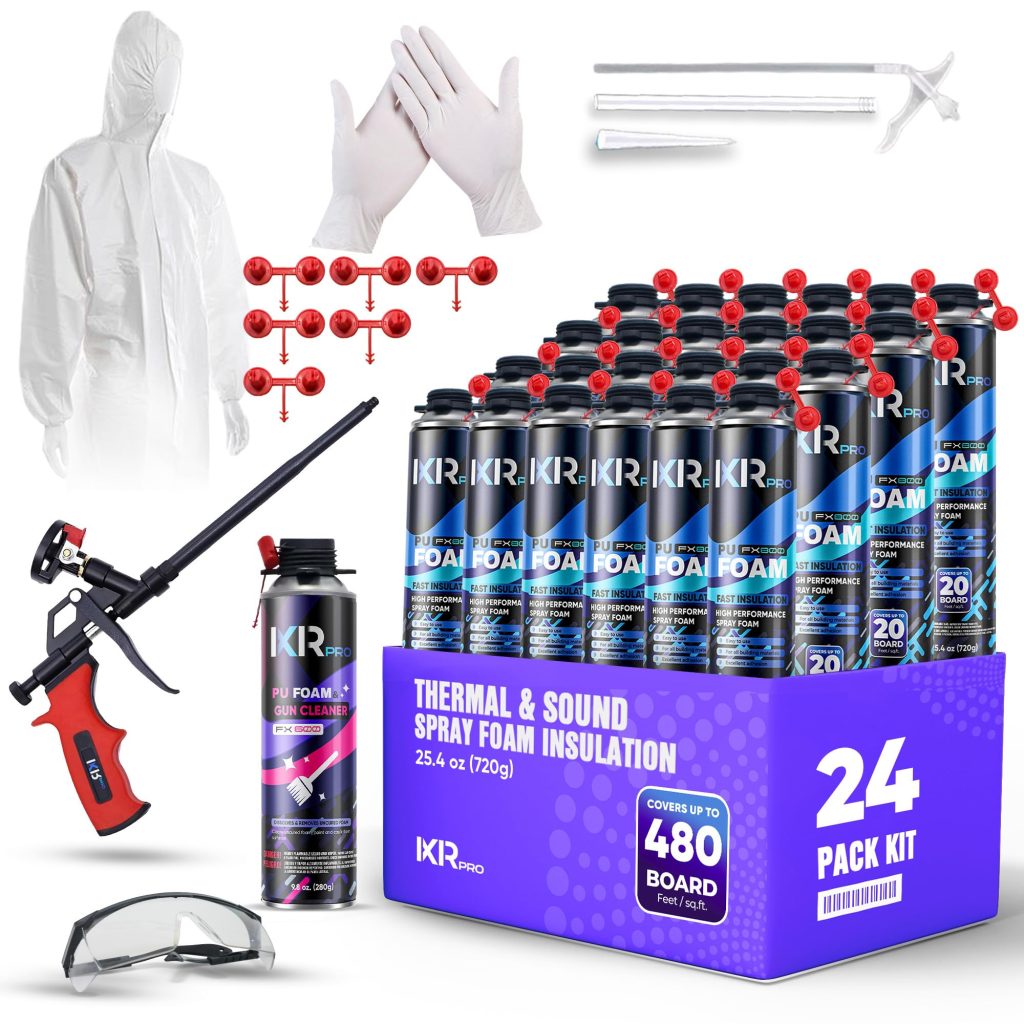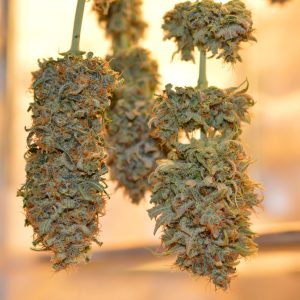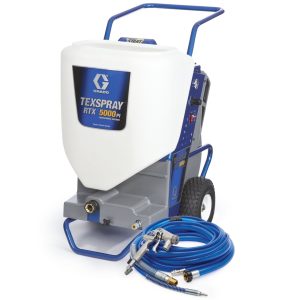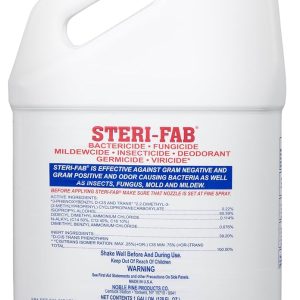
Closed cell spray foam kits have revolutionized the way homeowners and contractors approach insulation projects. These comprehensive systems provide everything needed to achieve professional-grade insulation results with superior thermal performance and moisture resistance. Unlike traditional insulation materials, closed cell spray foam kits offer exceptional R-values while creating an impermeable barrier that enhances structural integrity and energy efficiency. The increasing popularity of these systems stems from their ability to deliver long-term energy savings, improved indoor air quality, and versatile application across various building components.
The market for spray foam insulation kits has expanded significantly as more property owners recognize the substantial benefits of closed cell technology. These kits typically contain two-component polyurethane chemicals, specialized application equipment, safety gear, and detailed instructions that enable both professionals and skilled DIY enthusiasts to achieve outstanding insulation results. The self-contained nature of these systems eliminates the need for expensive professional equipment rentals while maintaining the high-performance characteristics that make closed cell foam the premium choice for demanding insulation applications.
Understanding Closed Cell Spray Foam Technology
Closed cell spray foam kits utilize advanced polyurethane chemistry that creates a rigid, dense foam structure with exceptional insulating properties. The foam consists of tiny cells that remain completely sealed, preventing air and moisture penetration while providing outstanding thermal resistance. Closed cell spray foam has an R-value of R-7 per inch, making it significantly more efficient than traditional insulation materials like fiberglass or cellulose. This superior thermal performance means thinner applications can achieve the same or better insulation values compared to conventional alternatives.
The closed cell structure creates a material with remarkable physical properties that extend far beyond simple thermal resistance. The foam’s density typically ranges from 1.5 to 2.5 pounds per cubic foot, providing substantial structural reinforcement to walls, roofs, and other building components. This structural enhancement can increase the racking strength of wall assemblies by up to 300%, making the building more resistant to wind loads and seismic forces. Additionally, the impermeable nature of closed cell foam prevents moisture intrusion, eliminating the risk of mold growth and structural damage that can occur with traditional insulation materials.
The chemical composition of professional closed cell spray foam kits involves the reaction between polyol and isocyanate components, typically methylene diphenyl diisocyanate (MDI). When these components mix in the proper ratios, they undergo an exothermic reaction that causes rapid expansion and curing. Modern formulations often incorporate hydrofluoroolefin (HFO) blowing agents that provide excellent expansion characteristics while maintaining environmental responsibility. This advanced chemistry ensures consistent performance across a wide range of temperature and humidity conditions.
Key Benefits of Closed Cell Spray Foam Kits
The advantages of closed cell spray foam insulation kits extend well beyond their impressive R-value performance. Closed cell spray foam can be installed almost anywhere, providing benefits like improved air quality, increased comfort, and energy savings. The material’s exceptional air sealing properties eliminate thermal bridging and infiltration losses that commonly occur with traditional insulation methods. This comprehensive air barrier creates a more consistent indoor environment while dramatically reducing energy consumption for heating and cooling systems.
Moisture control represents another critical advantage of closed cell foam systems. The material’s closed cell structure provides a Class II vapor retarder with permeance ratings typically below 1.0 perms, effectively preventing moisture migration through building assemblies. This moisture resistance makes DIY closed cell spray foam kits particularly valuable in high-humidity environments, basements, crawl spaces, and other areas where moisture control is essential. The foam’s resistance to water absorption also prevents performance degradation over time, ensuring long-term effectiveness.
The versatility of closed cell foam applications makes these kits invaluable for comprehensive building improvements. The material adheres excellently to wood, metal, concrete, and most other building materials, creating seamless coverage that eliminates gaps and thermal bridges. Closed cell foam is the best choice for robust insulating where space is an issue, as it can achieve 2x the R-Value of open cell inside a standard wall. This space efficiency is particularly beneficial in retrofitting projects where cavity depths are limited or in new construction where maximizing interior space is important.
Performance Comparison Table
| Insulation Type | R-Value per Inch | Air Sealing | Moisture Resistance | Structural Support |
|---|---|---|---|---|
| Closed Cell Spray Foam | R-6.5 to R-7.0 | Excellent | Excellent | High |
| Open Cell Spray Foam | R-3.7 to R-3.8 | Good | Poor | Minimal |
| Fiberglass Batts | R-3.2 to R-3.8 | Poor | Poor | None |
| Cellulose | R-3.6 to R-3.8 | Fair | Poor | None |
| Mineral Wool | R-3.1 to R-3.4 | Poor | Fair | Minimal |
Types of Closed Cell Spray Foam Kits Available
The market offers various closed cell foam kits designed for different project scales and application requirements. Small-scale kits typically cover 200-600 board feet and are ideal for residential retrofitting projects, rim joist sealing, and targeted insulation improvements. The Froth-Pak 200 is a Class A fire-rated, two-component polyurethane foam kit designed to fill cavities, cracks, and expansion joints, yielding up to 200 board feet of foam. These compact systems often include pre-connected hose assemblies, multiple mixing nozzles, and comprehensive safety equipment.
Medium-scale professional spray foam kits typically provide coverage from 600 to 1,500 board feet, making them suitable for larger residential projects or small commercial applications. These systems often feature upgraded dispensing equipment with longer hose assemblies and more precise temperature control systems. The increased capacity allows for more efficient coverage of larger areas while maintaining the quality and consistency expected from closed cell applications.
Large-scale commercial closed cell insulation kits can cover 3,000 board feet or more and are designed for extensive commercial projects or multiple residential applications. These systems typically include advanced temperature monitoring equipment, proportioning pumps for consistent mixing ratios, and heavy-duty dispensing guns capable of extended operation. Many commercial-grade kits also feature recyclable tanks and comprehensive recycling programs to minimize environmental impact.
Single-component closed cell foam kits represent a specialized category designed for smaller projects and detail work. These systems use pre-mixed foam that activates upon dispensing, eliminating the complexity of two-component mixing while maintaining excellent performance characteristics. While coverage areas are typically smaller, these kits excel in applications requiring precise control and minimal setup time.
Essential Components in Quality Spray Foam Kits
Professional closed cell spray foam kits include several critical components that ensure successful application and optimal performance. The core system consists of two pressurized tanks containing the polyol (A-side) and isocyanate (B-side) components, precision-engineered to maintain proper chemical ratios throughout the application process. These tanks typically feature integrated pressure gauges, temperature monitoring systems, and safety relief valves to ensure safe and consistent operation.
The dispensing system includes a specialized spray gun designed to mix the two components at the proper ratios while delivering a consistent spray pattern. High-quality guns feature adjustable spray patterns, quick-disconnect fittings for easy cleaning, and ergonomic designs that reduce operator fatigue during extended use. The connecting hoses are specifically designed to handle the chemical components while maintaining flexibility at operating temperatures.
Complete closed cell foam kits include multiple mixing nozzles to accommodate different spray patterns and application requirements. You get a full 10 mixing nozzles with each Foam it Green 602. You may have extra, and that’s ok! It’s a lot better than running short and shutting down the project. These nozzles are precisely engineered to create the proper turbulence for thorough mixing while delivering the mixed foam in various spray patterns suitable for different applications.
Safety equipment represents a critical component of professional-grade kits. This includes chemical-resistant gloves, protective suits, respiratory protection, and safety glasses specifically designed for polyurethane spray applications. Quality kits also include comprehensive safety documentation, material safety data sheets (MSDS), and emergency response procedures.
Temperature Control Systems
Proper temperature management is crucial for optimal foam performance. Premium closed cell spray foam kits include sophisticated temperature monitoring and control systems that ensure both chemical components maintain optimal temperatures throughout the application process. Improper tank temperature is the #1 cause of off-ratio spraying, making these systems essential for consistent results.
Application Techniques for Optimal Results
Successful application of closed cell spray foam kits requires understanding proper surface preparation, environmental conditions, and spraying techniques. Surface preparation begins with thorough cleaning to remove dust, debris, and any substances that might interfere with foam adhesion. All surfaces should be dry and free from frost or condensation, as moisture can interfere with the chemical reaction and create foam defects.
Environmental conditions play a crucial role in foam performance. Ideal application temperatures range from 65°F to 85°F, with relative humidity below 85%. Wind conditions should be minimal to prevent overspray and ensure accurate placement. When working in less-than-ideal conditions, professional closed cell kits often include environmental monitoring equipment to help determine application feasibility.
The spraying technique involves maintaining consistent distance from the substrate, typically 18-24 inches, while moving the spray gun in steady, overlapping passes. Proper technique prevents overheating of the substrate and ensures uniform thickness throughout the application area. For optimal results, foam should be applied in multiple thin passes rather than single thick applications, allowing each layer to cure properly before applying additional material.
Advanced application techniques include back-rolling for improved surface finish, temperature adjustment for varying conditions, and specialized patterns for different substrates. Experienced applicators often develop specific techniques for challenging applications such as overhead spraying, confined spaces, or irregular surfaces. These techniques require practice and understanding of how foam behaves under different conditions.
Comparing Top Brands and Their Features
The closed cell spray foam kit market features several leading manufacturers, each offering unique advantages and specialized formulations. Tiger Foam systems are renowned for their user-friendly design and comprehensive accessory packages. Our kits are self-contained and 100% recyclable. They come complete with all the accessories needed to start spraying. Their formulations provide excellent adhesion characteristics and consistent performance across various temperature ranges.
Froth-Pak systems by DuPont represent the premium segment of the market, offering advanced chemical formulations and precision-engineered dispensing equipment. These systems typically feature lower global warming potential (GWP) blowing agents and enhanced fire-rating characteristics. The company’s extensive research and development capabilities result in continuous product improvements and innovative solutions for challenging applications.
Foam It Green products focus on fast-curing formulations that minimize project downtime while maintaining excellent performance characteristics. Their systems often feature rapid rise times and quick surface cure characteristics that allow for faster project completion. The company’s emphasis on temperature stability makes their products particularly suitable for varying environmental conditions.
Regional and specialized manufacturers offer closed cell insulation kits designed for specific applications or local market requirements. These products often provide excellent value propositions while maintaining quality standards suitable for professional applications. Many regional manufacturers focus on specific niche markets such as marine applications, agricultural buildings, or specialty industrial uses.
Brand Performance Comparison
| Brand | Coverage (Bd Ft) | R-Value | Cure Time | Fire Rating | Price Range |
|---|---|---|---|---|---|
| Tiger Foam | 200-1,500 | R-6.5-7.0 | 20-40 min | Class A | $$$ |
| Froth-Pak | 200-620 | R-6.2-6.8 | 15-30 min | Class A | $$$$ |
| Foam It Green | 200-602 | R-6.5-7.0 | 10-25 min | Class A | $$$ |
| Touch ‘n Foam | 15-200 | R-6.0-6.5 | 30-60 min | Class A | $$ |
Installation Best Practices and Safety Considerations
Safe installation of closed cell spray foam kits requires comprehensive preparation and adherence to established safety protocols. Personal protective equipment (PPE) is essential and includes chemical-resistant clothing, respiratory protection with organic vapor cartridges, chemical-resistant gloves, and full face protection. The work area should be well-ventilated with mechanical ventilation systems capable of providing adequate air changes per hour to remove chemical vapors.
Pre-application preparation involves covering or removing items that could be damaged by overspray, establishing proper ventilation patterns, and ensuring emergency response equipment is readily available. Fire extinguishers rated for chemical fires should be positioned strategically throughout the work area, and emergency eyewash stations should be accessible when working with isocyanate-based systems.
Professional installation techniques emphasize consistent spray patterns, proper overlap, and maintaining optimal standoff distances. The spray gun should be held perpendicular to the surface with steady, consistent movement to prevent overheating and ensure uniform thickness. Multiple thin passes typically provide better results than single thick applications, allowing each layer to cure properly and minimizing the risk of thermal damage to substrates.
Quality control during installation involves regular thickness measurements, visual inspection for uniformity, and monitoring of environmental conditions. Digital thickness gauges provide accurate measurements to ensure code compliance and optimal performance. Surface temperature monitoring helps prevent substrate overheating that can cause adhesion problems or foam defects.
Post-application procedures include proper disposal of empty containers, cleaning of equipment, and inspection of completed work. Most spray foam kits include specific cleanup procedures and recommended cleaning solvents. Proper disposal of waste materials follows local environmental regulations and manufacturer recommendations.
Cost Analysis and Return on Investment
The initial investment in closed cell spray foam kits varies significantly based on coverage area, brand selection, and included accessories. Small residential kits typically range from $300-800 and cover 200-600 board feet, while larger commercial systems can cost $2,000-5,000 and provide coverage for 1,500-3,000 board feet. When evaluated on a per-board-foot basis, kit systems often provide better value than professional application services, particularly for projects requiring multiple applications or ongoing maintenance.
Long-term financial benefits of closed cell foam systems include substantial energy savings, reduced maintenance costs, and increased property values. Energy savings typically range from 15-50% depending on climate conditions, existing insulation levels, and building characteristics. In cold climates, the superior R-value performance and air sealing characteristics can reduce heating costs by 30% or more annually.
The durability of closed cell foam contributes to its excellent return on investment. Unlike traditional insulation materials that may settle, degrade, or require replacement, properly installed closed cell foam maintains its performance characteristics for the life of the building. This longevity eliminates recurring insulation replacement costs while providing consistent energy savings year after year.
Comparative cost analysis demonstrates that while closed cell foam kits have higher initial costs than traditional insulation, the total lifecycle costs are typically lower due to energy savings and durability. Professional installation of equivalent coverage often costs 40-60% more than DIY kit applications, making these systems attractive for property owners with appropriate skills and equipment.
ROI Calculation Example
For a typical 2,000 square foot home in a moderate climate:
- Initial Investment: $1,200 (closed cell spray foam kit)
- Annual Energy Savings: $480 (20% reduction in heating/cooling costs)
- Payback Period: 2.5 years
- 20-Year Net Savings: $8,400 (after initial investment)
Common Applications for Closed Cell Spray Foam
Closed cell spray foam kits excel in numerous applications where superior insulation performance and moisture control are essential. Rim joist insulation represents one of the most common and effective applications, sealing the critical junction between foundation walls and floor systems. This application eliminates air infiltration and moisture problems that commonly occur in these areas while providing excellent thermal performance in limited space.
Basement and crawl space applications benefit tremendously from the moisture resistance and structural enhancement properties of closed cell foam. The material creates an effective vapor barrier while providing insulation, eliminating the need for separate vapor retarder installations. The foam’s adhesion to concrete and masonry substrates creates seamless coverage that prevents moisture intrusion and thermal bridging.
Attic applications utilize closed cell foam for both roof deck insulation and air sealing around penetrations. When applied to roof decking, the foam creates a conditioned attic space that can house HVAC equipment more efficiently. The superior R-value performance allows for thinner applications compared to traditional insulation methods, maximizing usable attic space.
Commercial and industrial applications include cold storage facilities, agricultural buildings, and specialized structures requiring superior moisture control and thermal performance. The structural enhancement properties of closed cell foam make it valuable for buildings subjected to high wind loads or seismic forces.
Specialty applications include marine environments, food processing facilities, and buildings requiring superior fire resistance. The versatility of closed cell foam systems makes them suitable for unique requirements that traditional insulation cannot address effectively.
Troubleshooting Common Installation Issues
Understanding and preventing common problems with closed cell spray foam kits ensures successful project outcomes and optimal performance. Temperature-related issues represent the most frequent cause of installation problems. Improper tank temperature is the #1 cause of off-ratio spraying. Both ambient temperature and substrate temperature affect foam chemistry, requiring careful monitoring and adjustment throughout the application process.
Off-ratio spraying occurs when the two components mix in incorrect proportions, resulting in foam that may not cure properly or achieve design performance. This problem typically stems from temperature variations, clogged mixing nozzles, or pressure imbalances between the component tanks. Prevention involves regular equipment maintenance, temperature monitoring, and following manufacturer specifications for operating conditions.
Adhesion problems manifest as foam separation from substrates or poor bonding to building materials. These issues often result from contaminated surfaces, excessive moisture, or incorrect surface temperatures. Proper surface preparation, moisture control, and substrate temperature monitoring prevent most adhesion problems.
Foam defects such as excessive shrinkage, poor rise characteristics, or inconsistent density typically result from environmental conditions, incorrect mixing ratios, or expired chemicals. Understanding shelf life limitations, storage requirements, and optimal application conditions helps prevent these issues.
Surface imperfections including orange peel texture, uneven thickness, or poor surface finish often stem from incorrect spray techniques, improper gun adjustment, or environmental factors. Proper training, equipment maintenance, and environmental control ensure professional-quality surface finish.
Storage and Shelf Life Considerations
Proper storage of closed cell spray foam kits is essential for maintaining performance and extending shelf life. Chemical components should be stored in temperature-controlled environments between 65°F and 85°F, avoiding temperature extremes that can affect chemical stability. Storage areas should be dry, well-ventilated, and protected from direct sunlight to prevent container degradation and chemical breakdown.
Shelf life limitations vary by manufacturer and specific formulations but typically range from 12-18 months for unopened kits. Temperature fluctuations significantly reduce shelf life, making climate-controlled storage essential for maintaining chemical integrity. Many manufacturers provide date coding systems that help track age and remaining shelf life.
Inventory rotation practices ensure older materials are used first, preventing waste and maintaining product quality. Regular inspection of stored kits should identify any signs of container damage, pressure loss, or chemical separation that might indicate storage problems or expired materials.
Chemical compatibility considerations include avoiding storage near heat sources, oxidizing agents, or materials that might react with polyurethane components. Proper segregation and storage practices prevent contamination and maintain chemical stability throughout the storage period.
Environmental and Health Considerations
Modern closed cell spray foam kits incorporate advanced chemical formulations designed to minimize environmental impact while maintaining superior performance characteristics. The HFO Technology allows JM Corbond IV to provide excellent insulation performance while using blowing agents with reduced global warming potential compared to traditional formulations.
Health and safety considerations require understanding the potential hazards associated with isocyanate-based systems and implementing appropriate protection measures. Respiratory protection is essential during application and curing phases, as chemical vapors can cause respiratory sensitization in susceptible individuals. Proper ventilation systems and personal protective equipment minimize exposure risks.
Long-term indoor air quality impacts are generally minimal when closed cell foam systems are properly applied and fully cured. The inert nature of cured polyurethane foam means it does not off-gas harmful chemicals under normal conditions. However, incomplete cure or improper application can result in continued chemical emissions that may affect indoor air quality.
Environmental benefits of closed cell foam include significant energy savings that reduce building carbon footprints throughout the structure’s lifetime. The durability of the material eliminates recurring replacement requirements, reducing lifecycle environmental impacts compared to traditional insulation materials that require periodic replacement.
Disposal considerations for both unused materials and demolition waste require following local environmental regulations and manufacturer recommendations. Many manufacturers offer recycling programs for empty containers and unused materials, supporting sustainable building practices.
Future Trends in Spray Foam Technology
The evolution of closed cell spray foam kits continues with advancing chemical formulations, improved application equipment, and enhanced environmental performance. Bio-based polyols derived from renewable resources are increasingly incorporated into foam formulations, reducing dependence on petroleum-based chemicals while maintaining performance characteristics.
Smart foam technologies incorporate sensors and monitoring systems that provide real-time feedback on application quality, curing progress, and long-term performance. These systems help ensure optimal installation while providing data for performance verification and maintenance planning.
Nanotechnology applications are being explored to enhance foam properties including fire resistance, thermal performance, and durability. These advanced materials promise even better performance characteristics while potentially reducing application thickness requirements.
Automated application systems are being developed for large-scale commercial applications, providing more consistent results while reducing labor requirements and improving safety. These systems utilize robotic application equipment and advanced process controls to optimize foam placement and quality.
Enhanced recycling and disposal technologies are being developed to address end-of-life considerations for foam insulation systems. These developments support circular economy principles and reduce environmental impacts associated with building demolition and renovation projects.
Looking for reliable cleaning solutions? Check out our comprehensive guide on fabric sanitizer spray for maintaining clean, hygienic environments in your newly insulated spaces.
Ready to transform your building’s energy efficiency? Explore our selection of premium closed cell spray foam kits and discover the superior insulation performance that’s revolutionizing how we think about building comfort and energy savings. Our expert-tested kits provide everything you need for professional results at a fraction of the cost of contractor services.
Frequently Asked Questions About Closed Cell Spray Foam Kits
What is the difference between closed cell and open cell spray foam kits? Closed cell spray foam has an R-value of R-7 per inch compared to open-cell spray foam’s R-value of about R-3.7 per inch. Closed cell foam is denser, provides moisture resistance, and offers structural reinforcement, while open cell foam is less expensive but offers lower insulation values and no moisture resistance.
How long do closed cell spray foam kits last once applied? Properly installed closed cell spray foam maintains its insulation properties for the life of the building, typically 50+ years. Unlike traditional insulation that may settle or degrade, the rigid structure of cured closed cell foam remains stable indefinitely when protected from UV exposure and physical damage.
Can I use closed cell spray foam kits in cold weather? Most closed cell spray foam kits require temperatures above 65°F for optimal performance. Cold weather applications require heated storage, substrate warming, or specialized cold-weather formulations. Improper tank temperature is the #1 cause of off-ratio spraying, making temperature control critical for successful installation.
What safety equipment do I need when using closed cell spray foam kits? Essential safety equipment includes chemical-resistant clothing, respiratory protection with organic vapor cartridges, chemical-resistant gloves, eye protection, and adequate ventilation. Professional-grade kits typically include comprehensive safety equipment and detailed safety protocols.
How much coverage can I expect from closed cell spray foam kits? Coverage varies by kit size and application thickness. The Froth-Pak 200 yields up to 200 board feet of foam (200 sq. ft. at 1″ thick). Larger kits can provide 600-3,000 board feet depending on the system selected.
Do closed cell spray foam kits require professional installation? While professional installation ensures optimal results, many closed cell spray foam kits are designed for DIY use by skilled homeowners. Our kits are self-contained and come complete with all the accessories needed to start spraying. Success requires following safety protocols and manufacturer instructions carefully.
What R-value can I achieve with closed cell spray foam kits? The R-value of closed-cell foam is R-6.5-7 per inch, significantly higher than traditional insulation materials. This superior thermal performance means thinner applications can achieve the same or better insulation values compared to conventional alternatives.
How do I dispose of unused spray foam kit materials? Unused materials should be disposed of according to local environmental regulations and manufacturer guidelines. Many manufacturers offer container recycling programs. Completely empty containers may be recyclable, while containers with residual chemicals require hazardous waste disposal.
Can closed cell spray foam kits be used in high-humidity environments? Yes, closed cell spray foam excels in high-humidity applications due to its moisture resistance properties. The material provides a Class II vapor retarder with permeance ratings typically below 1.0 perms, effectively preventing moisture migration and mold growth.
What is the typical payback period for closed cell spray foam kit investments? Payback periods typically range from 2-5 years depending on energy costs, climate conditions, and existing insulation levels. Closed-cell spray foam leads to more energy savings and more comfortable living or working conditions, with many installations providing 15-50% energy savings annually.





